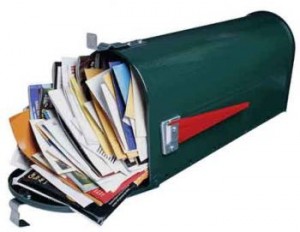I was on the road today. The usual flood of email hit my inbox. Some senders expected instant responses from me. But I'm starting to listen to good advice from Stuart Crawford, the former VAR who now specializes in social media. In a polite but clear manner, Crawford reminds senders on a regular basis that email isn't designed for instant communications.


full-inbox
I was on the road today. The usual flood of email hit my inbox. Some senders expected instant responses from me. But I’m starting to listen to good advice from Stuart Crawford, the former VAR who now specializes in social media. In a polite but clear manner, Crawford reminds senders on a regular basis that email isn’t designed for instant communications. Within our own business, we’re spending less time on email and more time using Google Docs to manage internal discussions. Here’s why. And here’s how.First, Crawford‘s email management technique. Send Crawford an email and you usually get some sort of automated reply indicating that (A) he appreciates your message and (B) he typically checks email once daily and will try to reply in a reasonable manner. Crawford’s approach offers all of us a timely, tactful reminder that if you really have an urgent matter, then pick up the phone and start a verbal conversation.
Plenty of big corporate executives use a range of techniques to ensure staff members pick up the phone rather than flood each others’ inboxes. Back in the 1990s, former Computer Associates International Inc. CEO Charles Wang was known to have email-free time periods within CA, so that executives could focus on deadlines and immediate action items rather than endless “reply-all” discussions. At one point, Wang uttered his infamous line about email: “I hate it. It’s a cover-your-ass tool…”
Google Docs for Action Items
I still believe in email. And I try to answer all messages. But things can get pretty overwhelming when hundreds of readers each day are inquiring about the MSPmentor 100, upcoming events, and other Nine Lives Media Inc. efforts.
Within our own business, we’re using shared Google Docs more and more to manage daily tasks, internal questions, and key deadlines. Instead of endless point-counterpoint discussions in email, our team simply updates the shared Google Docs once per day, and we discuss the bullet points on a daily phone call. It cuts way down on email.
Still, we welcome emails from readers. I apologize for being a bit slow to respond in recent weeks, particularly as I manage MSPmentor 100 inquiries during extended business travel.
I suspect many MSPs also struggle to keep up with email inquiries. I wonder: How many readers will steal a page from Crawford, and politely remind senders that email doesn’t always generate an instant, comprehensive response… no matter how many times you send the message.
Sign up for MSPmentor’s Enewsletter, Webcasts and Resource Center. And follow us via RSS; Facebook; Identi.ca; and Twitter. Plus, check out more MSP voices at www.MSPtweet.com.
About the Author(s)
You May Also Like


